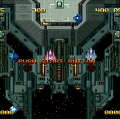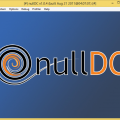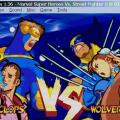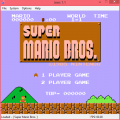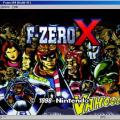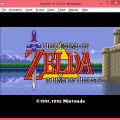- 0 replies
- 3,953 views
- Add Reply
- 0 replies
- 1,803 views
- Add Reply
- 4 replies
- 4,124 views
- Add Reply
- 8 replies
- 5,034 views
- Add Reply
NeoDS v0.2.0 Released!

NeoDS is a Neogeo emulator for the Nintendo DS.
v0.2.0 6/19/2008* Key configuration
* Pause key
* Put DS to sleep when lid is closed
* Save SRAM and NeoDS configuration to flashcard
* Fix crash when switching roms on certain flash cards
* Fix palettte bank swap bug on tile layer (metal slug 1 hud)
* Improve accuracy of vcounter, and vposition interrupts (fix freeze in Samurai Showdown 3, fix graphics in Blazing Star level 2, probly others)
* Fix issues when using dldi and slot2 ram from same flashcard (like supercard lite)
* Fix graphical corruption that occurs after a while when using slot2 ram
MameLoad TNG Beta u35 released

Frontend
June 20th, 2008Beta u35 Released
- My 'fix' in u34 for the game listings ended up morphing into another
bug. The name sorting should be much better now.
- My implementation of the -SNAPVIEW was incorrect as well. I made it
three choices (auto, internal and native).
AmiArcadia 7.0b for AmigaOS 4 released

Amigan Software are proud to announce the release of the AmigaOS 4 port of Ami/WinArcadia 7.0b. Thanks to Alexandre Balaban for this port. 7.0b is also already available for AmigaOS 3 and Windows.
http://amigan.1emu.net/releases/
It's an emulator for Signetics 2650-based machines (Emerson Arcadia 2001, Interton VC 4000, Elektor TV Games Computer, etc.)
1Emulation.Com to REVIEW Hori Real Arcade Pro 2: SA!


--- UPDATE: THE REVIEW HAS NOW BEEN POSTED. READ IT HERE! ---
First, we want to apologize because this was supposed to be posted 2 days ago. We thought it would be better to wait and post it after all the MAME news updates finished, so this can go on top of the front page.

There is some great news to share to everyone who visits 1Emulation. We are currently in the process of reviewing the Hori Real Arcade Pro 2: SA (also known as HRAP2:SA)! This is a revolutionary arcade stick, made by fighting game fans, for the ultimate arcade experience. The Hori Real Arcade Pro 2: SA is a "special addition" stick that uses not only a Sanwa stick, but Sanwa buttons as well. It was made for the Sony Playstation 2, but with additional adapters, it can be used on the Playstation 3, Sega Dreamcast, and PC. Sanwa parts are very popular in Japan and by fighting game fans around the world because of their fast response times, which really help during competitions.
Thanks to the great folks at Akihabarashop.jp, we were able to receive a unit for review. Akihabarashop.jp is known as the place for superb arcade parts and arcade sticks. Our review will begin from the time we receive the package, to the quality, and performance of the arcade stick.
Please check back at 1Emulation for the upcoming review of Hori Real Arcade Pro 2: SA arcade stick.
Expect the review by the end of this week! ![]()

